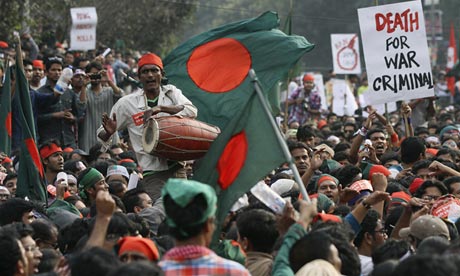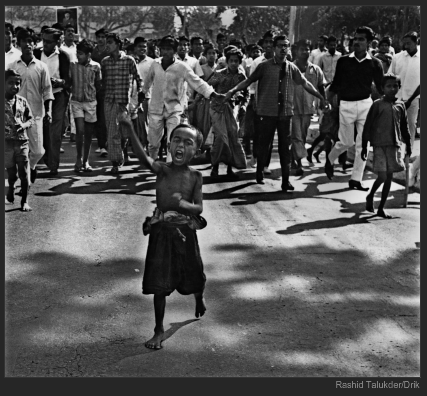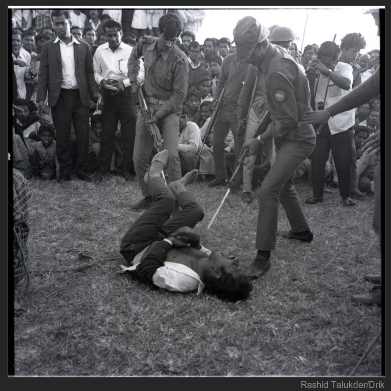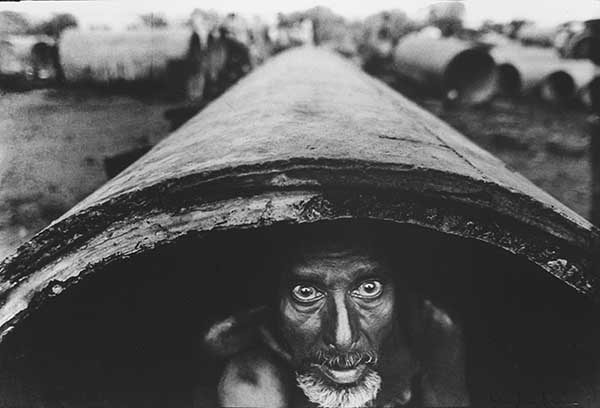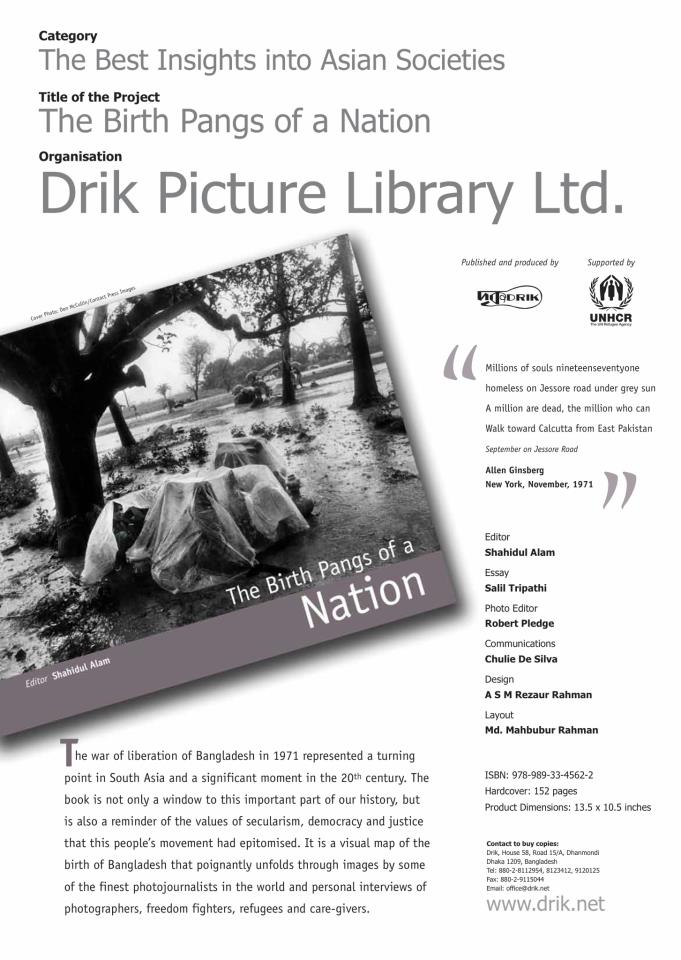
Drik wins book of the year award for 2011 at the Asian Publishing Convention 2012 in Kuala Lumpur in the category Best Insights into Asian Societies (non-fiction)
The award is given to a book that leads to better understanding and insights into Asian economics, politics, social and environmental issues. The award was received by?Datin Paduka Marina Mahathir on the 30th November, at the Crowne Plaza Hotel, Mutiara, Kuala Lumpur, Malaysia.
The acceptance speech:
Ladies and Gentlemen,
Drik today would like to thank the Asia Publishing Committee for this recognition and UNHCR Bangladesh for their support in this endeavor. Thanks are also due to the core team and many others who contributed to the production of this book.
However, this award belongs to the brave and courageous people portrayed in this book and the twenty photographers from Bangladesh, France, India, UK and USA who themselves took risks to document the events.
The Bangladeshi War of Liberation, like all other wars, has a contested history. The number killed, the number raped, the number displaced, are all figures that change depending upon who tells the story. But the visual record is a testament to the resilience, the powerful spirit and dignity of the people who were caught in this war.
It is our wish that the younger generation will be inspired by the powerful spirit and courage of the people of Bangladesh. Coming after 40 years, we remember them today, with both a tear and a smile. Thank you.
More information about the book



